What Do Black Panthers Look Like: Behavior and Lifestyle
The term Black Panther invokes a sense of mystery and curiosity because they are gorgeous majestic creatures that belong to the Animalia kingdom and partially because it reminds everyone of the iconic Chadwick Boseman, who gave the world their favorite superhero, the Black Panther.
When asked what a black panther looks like, most people imagine a large cat with sleek and glossy short black eyes that glow in the dark. While they are partially correct, you will be surprised that Black Panther is a generic term that describes large felines like jaguars and leopards belonging to the Panthera Genus. Black Panther is not a species but a color category of big cats.
What Does a Black Panther Look Like
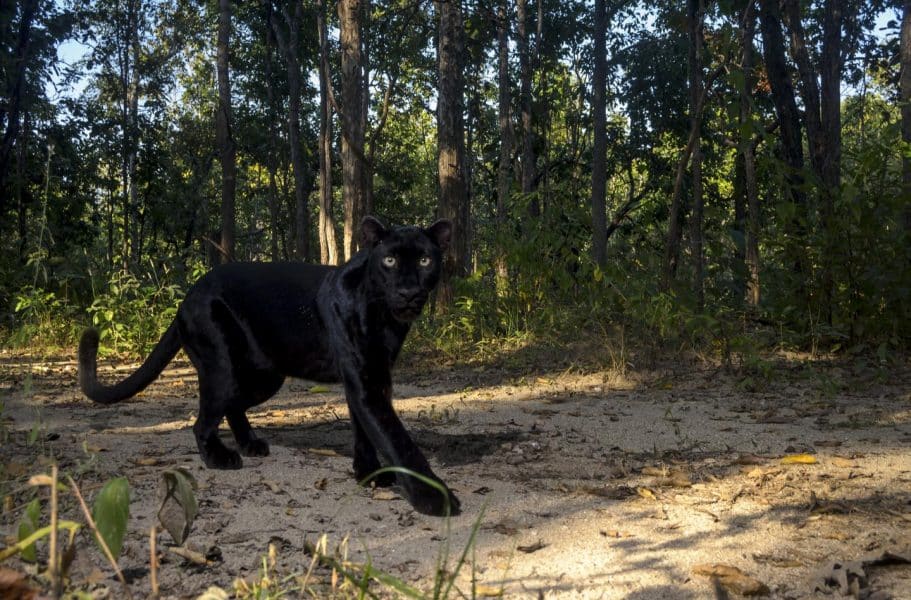
Most people either imagine a Marvel Superhero ‘Black Panther’ or a large black cat with distinct markings when asked what a black panther looks like. The distinctive appearance of a black panther is mainly because of a genetic trait known as melanistic coloration that leads to an overproduction of melanin.
This excess melanin is what gives these cats a dark coat. While the fur of these cats is predominantly black, there are faint markings like stripes of spots or rosettes under this dark pigmentation.
The combination of recessive and dominant alleles is what leads to the pigmentation. In all species, there are proper alleles that help in the production of melanin and the intensity of production. The low number of black panthers is because of varying melanin levels in these cats.
Another factor contributing to the black look is the angle of light falling on the cat’s body and at what stage of life the cat is. For example, certain black panthers look completely black in low or sparse light. Sp spotted patterns may reveal themselves on the body in direct sunlight, adding depth to the dark color. Seasonal changes can also influence the color of the fur. Lynxes get a dark coat in certain seasons occasionally.
Black panthers are typically 37 to 65 inches length-wise with a long tail of about 43 inches. They are 18 to 31 inches tall. It is very common for Male panthers to be 30% bigger than female panthers. Males weigh between 66 and 200 pounds, and females weigh between 15 and 130 pounds.
Regarding speed, black panthers, like tigers, can move at 36m/h, and jaguars can at a speed of 49.7mph.
Location and Habitat: Where are Black Panthers Located?
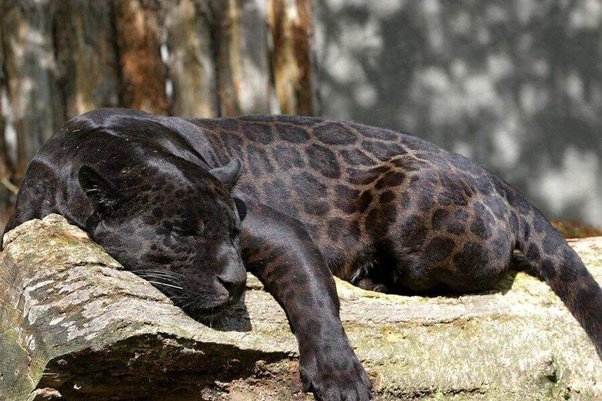
Black Panthers have a global presence. While they are usually found in Asia and Africa, certain species can be found in America as well
1. Africa
In Africa, the term black panther is used for Leopards. They are found in arid savannas and dense rainforests. The dense vegetation allows them to blend in with their surroundings, and their black coats act camouflage. A few black panthers have also been spotted in Ethiopia, Mount Kenya, and the Aberdare, but their strength is quite low.
2. Asia
In Asia, melanistic leopards are found in Malaysian rainforests and dense jungles of the Indian subcontinent. In India, Lynx, Tigers, Pumas, and Jaguarundis with high melanin also come under the category of black panthers. These cats are quite adaptable and can survive in different ecosystems.
3. America
In America, black panthers are more commonly associated with melanistic jaguars. These felines are found in dense rainforests of the Amazon basin, where their dark fur helps them blend in with the shadows, increasing their stealth during nightly hunts. In South America, black panthers roam around in swamps and grasslands of the Pantanal region.
The Florida panther, a subspecies of mountain lion or cougar, can be found in eastern America. Lighter-bellied black pumas have been seen in Kentucky, and black pumas, known as North American black panthers, have been seen in Kansas and eastern Nebraska.
Black panthers are not restricted to a specific geographical location and can adapt and survive in many environments and ecosystems.
Black Panthers: Behavior and Lifestyle
Here is everything you need to know about the lifestyle and behavior of Black Panthers.
1. Solitary Lifestyle
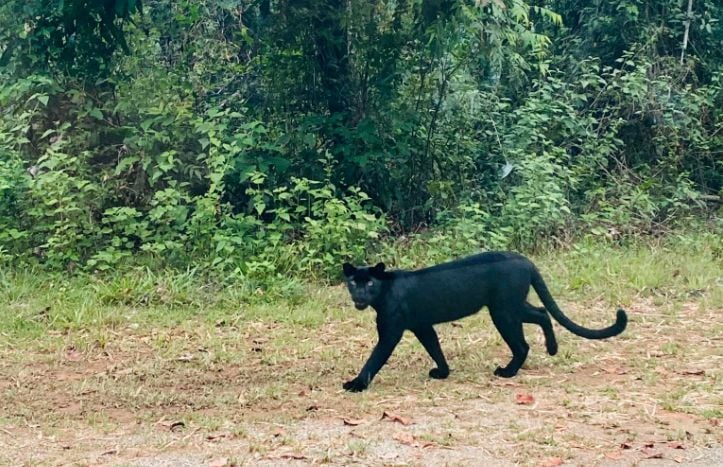
Black panthers, be it jaguars, leopards, lynx, or pumas, are known for their solitary lifestyle. They typically avoid social settings except during the mating season or when parents are tending and caring for their cubs.
2. Territorial Behavior
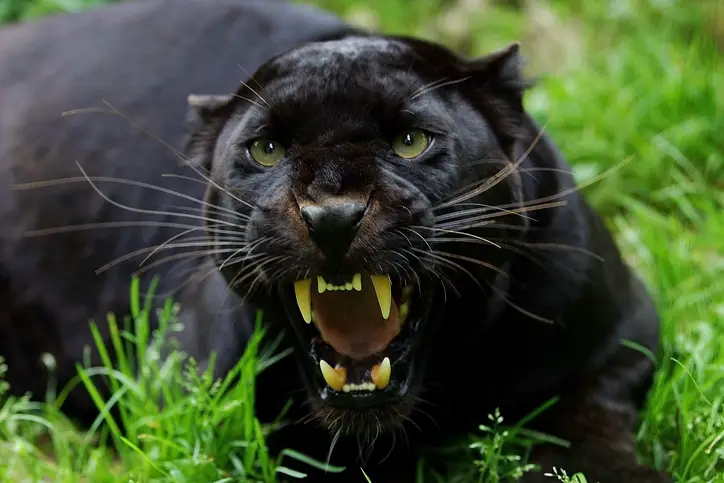
Territoriality is a major part of a black panther’s behavior. Male panthers often have larger territories that overlap with several females’ territories. Male panthers are also comparatively more territorial than female panthers.
They mark their territory with tree scratch marks, scent markings with feces, urine, and vocalizations. They set up rigid boundaries to safeguard from potential rivals.
3. Nocturnal Tendency
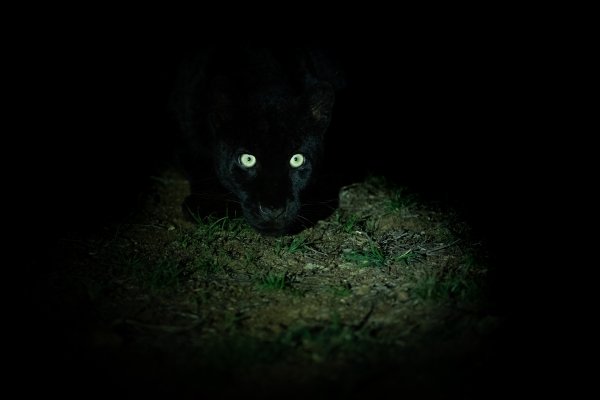
Black panthers are nocturnal hunters who prefer to be active during the night. Their dark coat acts as the perfect camouflage in low light conditions and shadows, which helps them in stalking and ambushing their prey. Rainforests are perfect areas to support their stealth and give them ample cover.
4. Hunting Techniques

Black panthers are formidable predators with excellent hunting skills. They rely on their keen senses, including sight, hearing, smell, agility, and strength. They usually hunt prey like deer, wild boar, and other smaller mammals. Black panthers can adapt to different food sources and environments.
5. Adaptation to Water
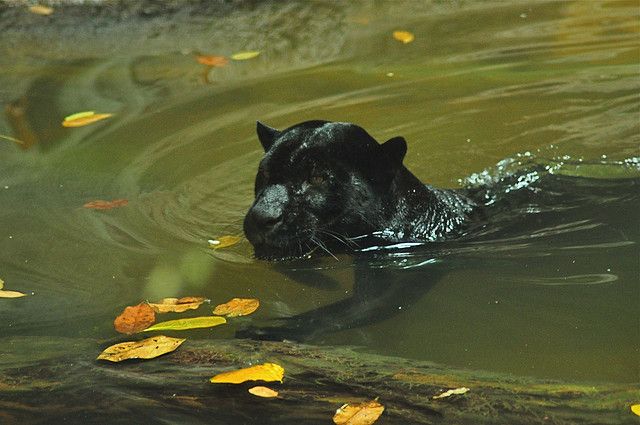
Water plays an important role in the lifestyle of black panthers, especially Jaguars. Jaguars are excellent swimmers, often found near rivers, lakes, and wetlands. They not only use water for drinking but also for cooling off in hot climates. They may also hunt aquatic prey, so swimming is a hunting technique.
6. Stealth
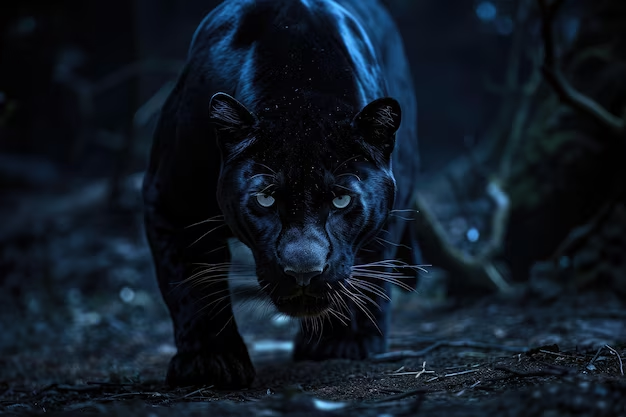
Black panthers are known for their elusive nature and exceptional stealth. They could creep up right next to you, and you would not even hear them approaching. They move through territories quietly and stealthily, using vegetation as cover. Their dark coat gives them the perfect camouflage against the background of dense vegetation.
Their ability to blend in with their surroundings is a hunting strategy and a way of avoiding potential threats and trouble. Black panthers are often known as the ‘ghost of the forest’ for their stealth and ability to blend in with their surroundings.
Black Panthers: Reproduction and Lifespan
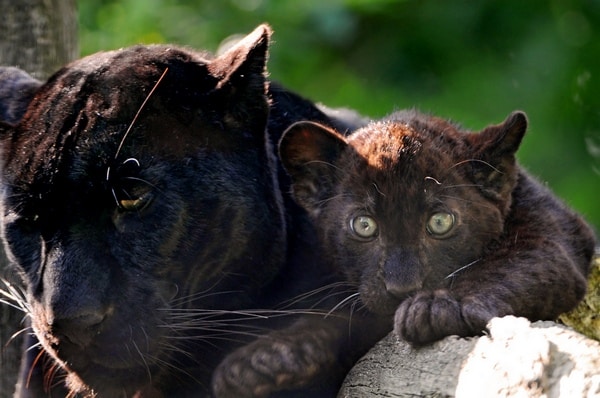
Although there is no fixed mating season for black panthers, the reproduction cycle has different phases.
1. Reproductive Cycle and Mating
Black panthers have a unique mating behavior, with mating occurring throughout the year. The female panther goes through an estrous cycle lasting approximately 46 days. The female black panther is in heat during this cycle for 6 to 7 days. Females reach sexual maturity at the age of 1.5 to 2.5 years, whereas males reach sexual maturity at the age of approximately 3 years.
2. Gestation and Cub Birth
The gestation period for female panthers is relatively short, ranging from 3 to 3.5 months. The female black panther typically births a litter of 2 to 4 cubs. Although a female black panther can potentially give birth to a litter of 1 to 6 cubs, 2 to 4 cubs is the average number.
3. Cubs
Black panther cubs are born with closed eyes, leaving them blind for the first 4 to 9 days after birth. They are extremely vulnerable at this point. Other than that, there are only 40 to 50 percent chances of cubs making it through their first year of life as their vulnerability is significantly higher than the rest of their life. Cubs are in major danger when their mother is away hunting.
4. Maturity and Development
Black panther cubs take approximately 3 years to reach maturity. Their maturation process involves learning basic survival skills from their mother. A few months after birth, black panther cubs start accompanying their mother in search of prey, where they learn how to hunt. Young black panthers are quick learners and, within 9 months, can hunt medium-sized prey alone.
5. Lifespan
The average lifespan of a black panther is 10 years. Females have higher chances of getting through the 10-year mark. Most males live around 7 to 8 years. If a male survives through the combat period, he can also live up to and beyond 10 years.
However, in captivity, the lifespan of black panthers can increase significantly, being as long as 23 years. Captive environments often provide conditions that can contribute to a longer life expectancy than the challenges faced in the wild.
Diet and Nutrition: What Does a Black Panther Eat
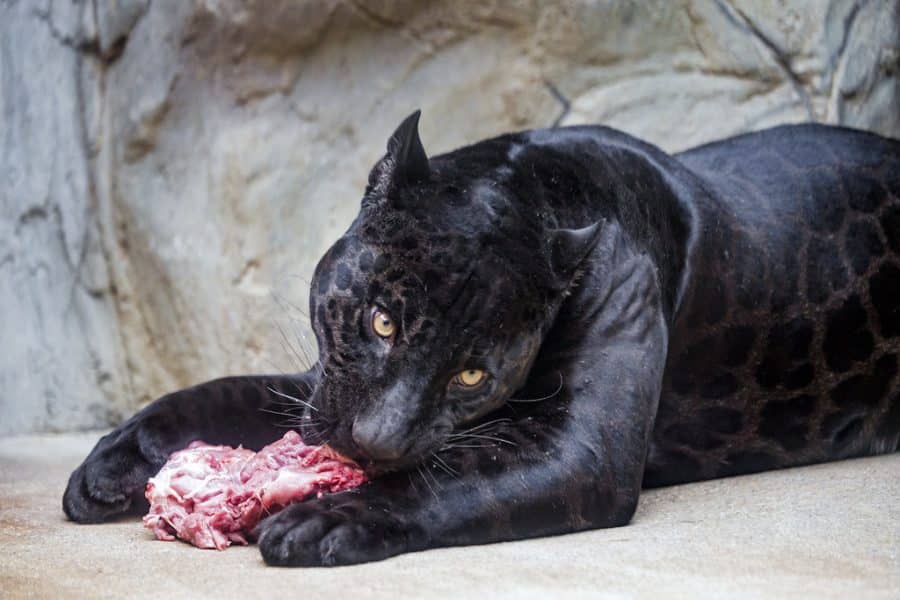
The diet of a black panther is predominantly carnivorous. They prey on weaker members of the food chain. They hunt buffaloes, cows, deer, and other weak animals. Black panthers, like leopards and jaguars, have a diverse food palette that is rather unique when compared to other animals within the Panthera genus. They prey on warm-blooded animals like rabbits, antelopes, and mice. More opportunistic people also eat reptiles, birds, fish, insects, and vermin.
Black panthers have a strategic hunting process where they focus on a small herd while hunting and choose prey from that. They choose smaller herds because it reduces their chances of getting hurt. The hunting pattern of black panthers includes stealth and adaptability.
They move during the night, and their dark fur acts as a camouflage, allowing them to be nearly invisible in the dark jungle. Black panthers do not only hunt on the ground but also through trees or in trees, allowing them to ambush their prey from above. Black panthers can eat up to 20 to 30 pounds of meat at a time, depending on the prey available and the threats in the dense forest surroundings. According to the Florida Fish and Wildlife Conservation Commission, 70% of black panthers eat deer, raccoons, wild hogs, and tapir. Panthers attack pets and livestock like pigs, cows, dogs, bunnies, and cats.
Interesting Facts About Black Panthers
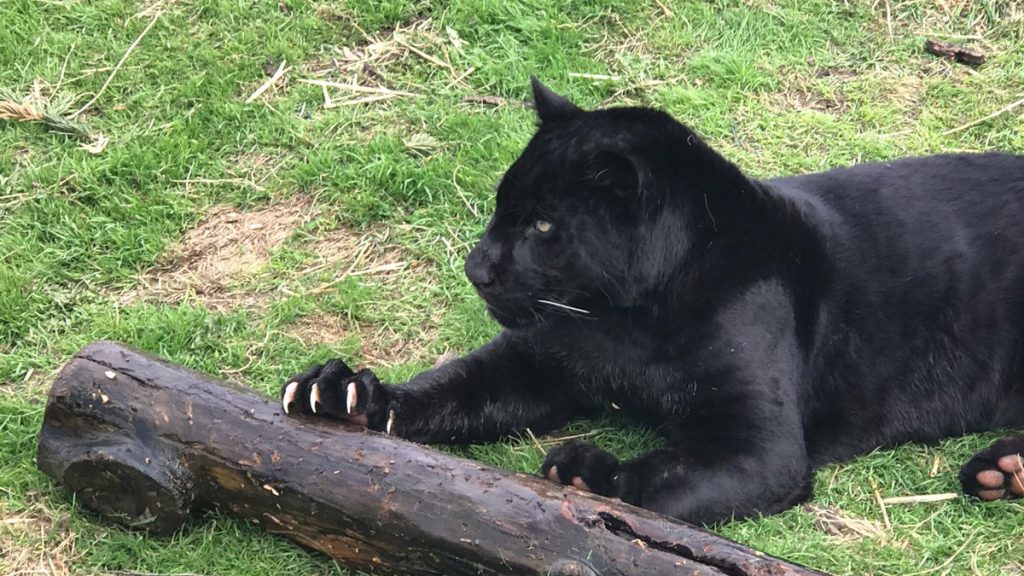
1. Communication
Like all other big cats, black panthers communicate through vocalizations. Black panthers have various vocal sounds, including growls, roars, and chuffing sounds.
These serve various purposes, such as communication with other black panthers, asserting dominance, signaling distress, or marking territories. Their roars can travel long distances and be heard from far away. The variety in their vocal expressions adds to the complex nature of their communication methods.
2. Incredible Leaping Ability
Black panthers are known for their exceptional leaping abilities and climbing skills. They can effortlessly leap great distances horizontally and vertically and scale high rocks and trees, allowing them to navigate their surroundings with agility and ease.
3. Grooming and Cleaning
Black Panthers are consistent and meticulous groomers. They use their rough tongues to clean and groom their fur regularly for hygiene and to maintain the stealth required for hunting. If you have seen how small cats groom themselves, you will understand that these bigger ones are not much different.
4. What Does a Black Panther Symbolize
Black panthers hold cultural significance in various folklore and mythologies. In some cultures, they are considered to be symbols of strength, mystery, and power. In some cultures, they are symbols of grace, beauty, feminine power, courage, and rites of passage; in others, they are associated with deities and supernatural beings.
5. Symbols of Conservation
As a symbol of grace and strength, the black panther is often used in conservation efforts. Its image raises awareness about preserving wildlife and wildlife habitats and protecting these iconic big cats.
6. Eyes
Black panthers have eyes with distinctive vertical slit-like pupils like all cats or big cats. This allows them to control the light that enters their eyes, helping them in their nocturnal hunting activities.
They also have reflective lenses on their eyes, which helps them control the amount of light entering them. They can see 6 to 7 times better than humans at night. Their eyes are usually yellowish gold and green and stand out brilliantly against their dark melanistic fur.
7. Advantages of Melanism
While melanism may seem beautiful, it can benefit black panthers in certain environments. The dark coat helps them absorb and retain heat more efficiently in cold temperatures, providing a thermal advantage during cold nights.
8. Elongated Body Structure
Black panthers often have a more elongated body structure when compared to their non-melanistic counterparts. This allows them to move stealthily through dense vegetation and helps in hunting and avoiding potential threats and dangers.
9. Claw Marks
Black panthers, like all other cats, big or small, have retractable claws that they use for hunting and climbing. The distinctive claw mark left by a black panther on trees and other surfaces can be a sign of territory marking or a way to sharpen and maintain their claws.
10. Hearing Ability
Black panthers can hear more than 5 times the number of noises and sounds that a human can. Including ultrasonic sounds like the squeaks of mice.
Conservation of Black Panthers
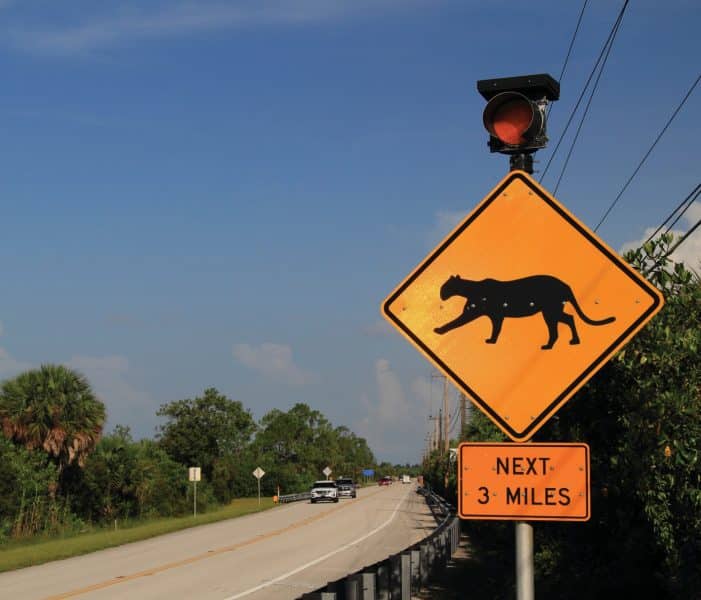
The conservation of black panthers, especially the leopards, is a cause for concern. Every species is facing the threat of endangerment and is highly vulnerable. Their endangerment is due to factors like habitat loss, illegal trade, and human-wildlife conflict.
1. Illegal Trade
The leopard population has been severely affected by the illegal trade of leopard skin products like jackets and mufflers. Despite strict bans and regulations, these continue to be sold illegally, further jeopardizing the sparse leopard population.
Moreover, the excessive and blind cutting of trees in leopard habitats for construction has destroyed the ecosystem, leading to a decline in suitable living spaces.
2. Increased Poaching
One of the more significant threats to leopards is poaching, driven by the demand for their body parts. You must have seen heads of big cats decorated on walls and mantles like trophies in movies or even in real life if you visited a forest cabin or some aristocratic villa.
Poachers target leopards for their whiskers to be used for potions, occult practices, cosmetics, and accessories. Furthermore, since black panthers often feed on cattle, they are poisoned by ranchers to protect their herds.
3. CITES Parks
In an attempt to bring attention to the alarming decline of the leopard population, international efforts have been made to protect these cats. Leopards are safeguarded under the Endangered Species Act of the United States and the Convention on International Trade in Endangered Species (CITES). Wildlife parks have been established to provide protected spaces for these cats.
The Black panther was among the first animals to be classified under the Endangered Species Act 1973. At that time, the Florida panther population was estimated to be between 12 to 20 individuals.
4. Other Notable Efforts
The US Fish and Wildlife Services (FWS) initiated the first Florida Panther Recovery Plan in 1981 to prevent the species’ complete extinction and increase their population in natural habitats.
In the 1980s, speed limits of 45 mph were imposed on roads running along or through forests and mountains to reduce panther-vehicle collisions. The Florida Department of Transportation also established wildlife underpasses and fences along more than 40 miles of road in the 1990s to reduce vehicular threat.
However, despite all these efforts, black panthers remain endangered. The International Union for Conservation of Nature (IUCN) classifies leopards and jaguars as endangered species. Since a combination of unique genetic traits from both jaguars and leopards is responsible for the melanistic trait in black panthers, there is a major possibility of a decline in the successful breeding of black panthers.
Conclusion
Black Panthers, with their sleek and glossy fur and reflective eyes, are excellent hunters with ghost-like stealth and are well-known cultural symbols. Beyond their association with Chadwick Boseman and Marvel, they are famous for their unique melanistic condition, ability to blend in with their surroundings, and speed. They are also symbols of wildlife conservation but, unfortunately, are considered an endangered species.
Their melanistic condition is due to a cross between leopards and jaguars and distinct genetic traits found in them. Many conservation efforts are being made, like the Florida Recovery Plan and Roadway Safety Plans.
These solitary cats are present worldwide and can adapt and thrive in various environments and ecosystems.

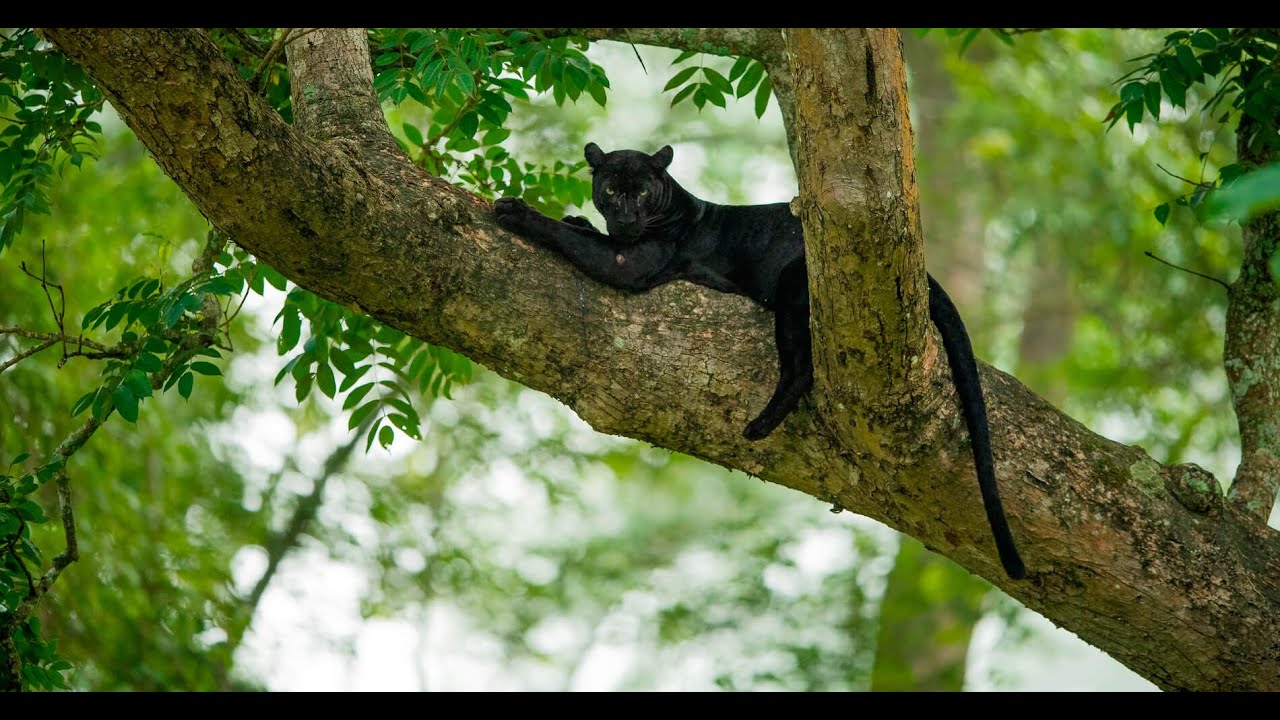
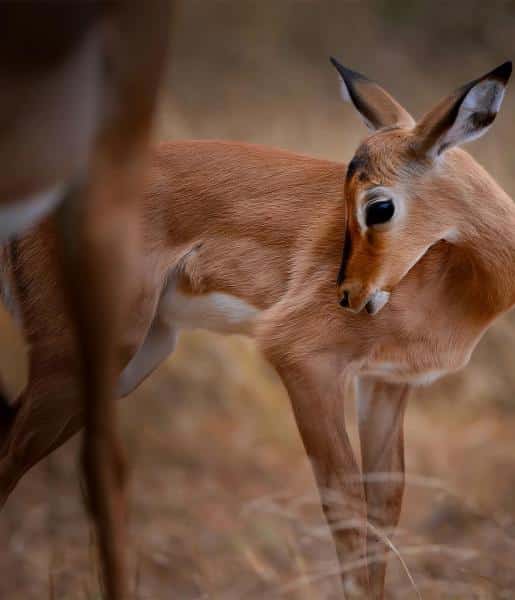
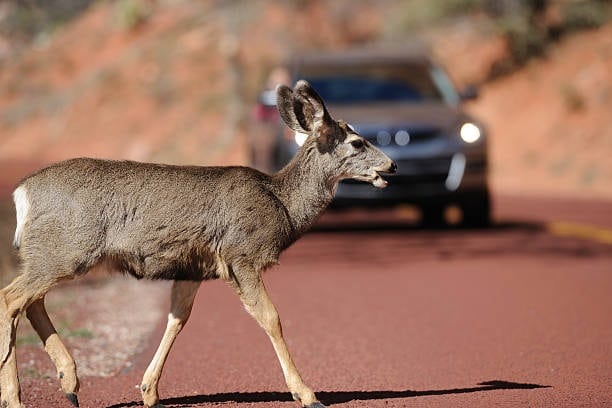
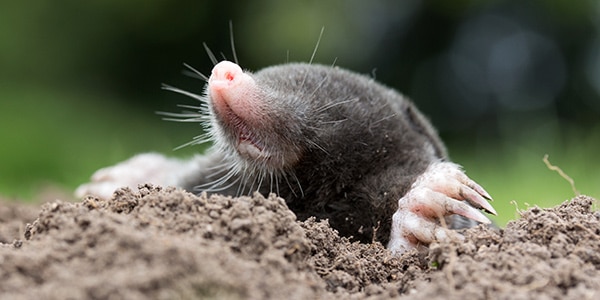
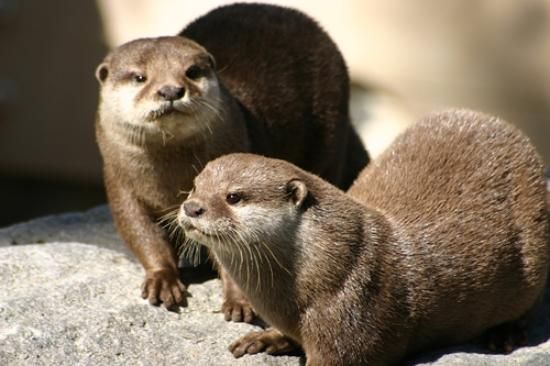
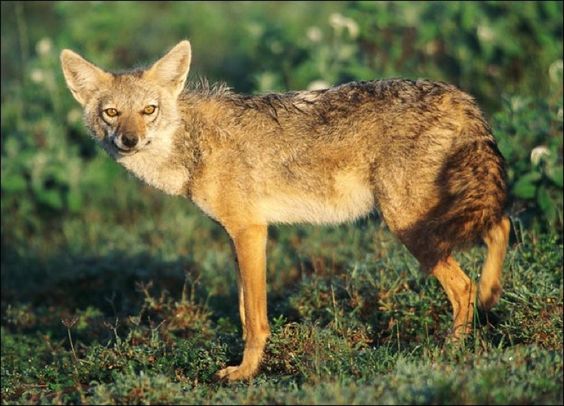
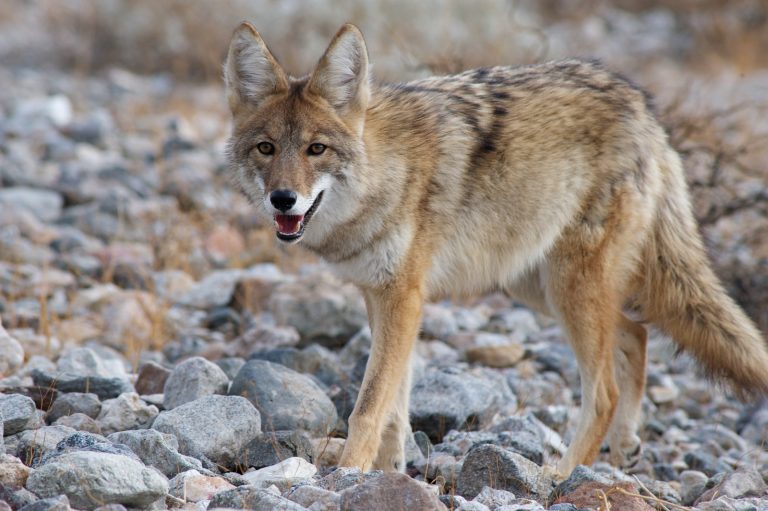
I was able to find good information from your blog articles.